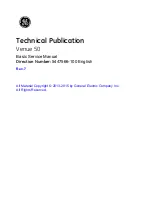
Page 5
2.2. Safety Instructions
All new autoclave users must undergo a period of training in proper
usage under an experienced employee.
When sterilizing plastic materials, make sure that the item can
withstand sterilization temperature. Plastic that melts in the chamber
is liable to cause a great deal of damage.
On closing the device door, make sure it is properly locked before
activating. Verify that DOOR OPEN
symbol is replaced by the
“System ready” message.
When withdrawing trays, use the enclosed tray handle or wear heat
resistant gloves.
Before opening the door, verify that the pressure in the chamber
equals the atmospheric pressure (chamber pressure is displayed on
the screen).
Open the door slowly to allow steam to escape and wait 1 minute
before you remove the load.
Once a year certified inspector must perform pressure chamber
safety test.
Once annually, or more frequently, effective tests must be
performed, i.e., calibration and validation.
Make sure there are no leaks, breaks, blockages, whistles or strange
noises.
Perform maintenance operations as instructed. The owner of the
autoclave is responsible to perform the maintenance operations.
Notify the person in charge immediately of any deviation from the
proper function of the device.
Protective equipment and clothes and other safety instructions
should be implemented in accordance with local and national
regulations and/or rules!
2.3. Operating Conditions
This device is for indoor use only!
The sterilizer should be loaded only with autoclavable material!
Minimum room ventilation shall be 10 cycles per hour.
The environment shall not exceed an ambient temperature range of
from 5
º
C (41
º
F) to 40
º
C (104
º
F) and a relative humidity of 85%
respectively.
The operational altitude shall not be over 2000 meters (ambient
pressure shall not be lower than 80 kPa).
Operate the autoclave only in the manner specified in the manual. If the
equipment is used in a manner not specified by the manufacturer, the
protection provided by the equipment may be impaired.
Caution!
Waste water should be brought into the public net in
accordance with the local rules or requirements
ONLY NON-HAZARDOUS LIQUIDS SHALL BE DISPOSED IN
PUBLIC SEWAGE!








































